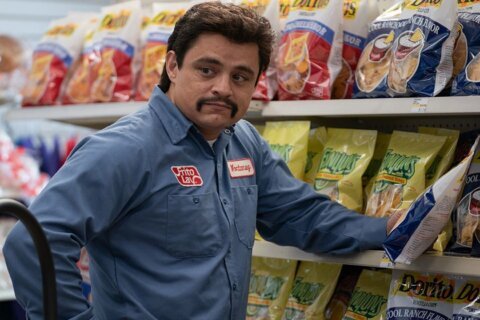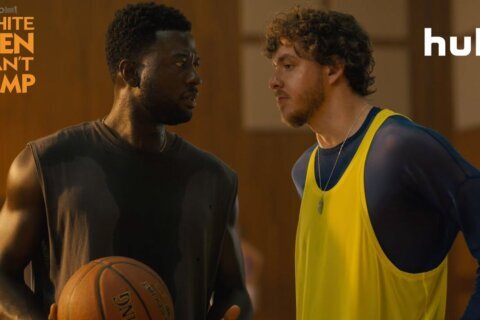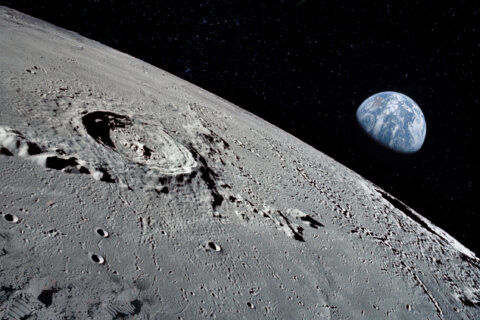Countdown to the Oscars: Join WTOP for an in-depth look at all nine Best Picture nominees every Wednesday and Friday until the Academy Awards on Feb. 26.
Jason Fraley, WTOP Film Critic
WASHINGTON – Martin Scorsese wanted to make a film his daughter could finally see. So he took the children’s book, “The Invention of Hugo Cabret,” and adapted it into the magical 3D movie, “Hugo.”
It tells the tale of a young orphan (Asa Butterfield) who lives behind the clock of a train station in 1930s Paris. His “want” is to find the missing piece of a mechanical “automaton,” which draws mysterious pictures from Georges Melies’ “A Trip to the Moon” (1902). His “need” is to learn how his own personal cog fits into the gears of life, a quest that involves a young girl named Isabelle (Chloe Grace Moretz) and her toymaker godfather (Ben Kingsley), who’s hiding a secret, cinematic past.
You won’t find the auteur staples of in-your-face violence and rock-n-roll soundtracks, but there’s still so much Scorsese in this picture. The shots of Hugo looking out from the clock mimic Scorsese’s own view from his childhood apartment in New York’s Little Italy. What’s more, his love for classic movies bleeds from every frame, where clips of Harold Lloyd, Charlie Chaplin, Buster Keaton and Douglas Fairbanks prove Scorsese’s commitment to film preservation. As such, “Hugo” joins “The Artist” in making 2011 the year that Hollywood reclaimed movie history.
Under this watchful eye, “Hugo” may be the first film to apply actual directing concepts to the 3D gimmick. Previous efforts have built spectacular-looking 3D worlds (“Avatar“), but Scorsese actually uses the third dimension as another storytelling tool for the “language” of cinema:
- When a train security official intimidates young Hugo, Scorsese has the man’s face protrude further and further from the screen, literally intimidating us by putting us in Hugo’s shoes.
- During another scene, Scorsese applies 3D to a long “single take” through a train station, where the camera rolls for an extended period without cutting (a la “GoodFellas“).
- Most impressively, he uses trains to conduct a masterful commentary on the evolution of film technology. In flashback, a 2D movie theater audience watches the Lumiere Brothers’ “Arrival of a Train at La Ciotat” (1895) and ducks as a train moves toward them on-screen. Later, we duck in our own seats as a 3D train barrels toward us.
As blasphemous as it sounds to question the master, I think Scorsese missed a huge opportunity here. Rather than showing the “La Ciotat” and “Hugo” trains separately, he should have populated the Lumiere audience out amongst us in 3D, causing us all to duck the train together. In this way, the vintage audience would be spooked by the birth of cinema just as we are spooked by the advancement of special effects. The direct link would make the commentary much more profound.
He could have done something similar when showing the clip from “The Great Train Robbery” (1903), produced by Thomas Edison, where a thief fires a gun directly at the audience. I can’t believe I’m about to say this, but it may have been better to have had a 3D bullet actually fly out at the audience. I would normally advise against such gimmicky elements, but here, in this context, with this subject matter, it would have been a profound commentary on evolving cinema technology.
Overall, the drawbacks of 3D still don’t outweigh the positives for me. I still wrestle with having a layer of distraction between my eye and the screen. It seems fruitless when you consider that film has always operated on the “illusion” of 3D, either with “deep focus,” where foreground and background are in focus simultaneously (“The Rules of the Game,” “Citizen Kane“), or “rack focus,” where you switch focus between foregrounds and backgrounds (TV’s “The Wire”).
Still, I am grateful Scorsese has introduced an entirely new generation to the work of Melies, known previously only to film students. Now he’ll be mainstream — and look like Ben Kingsley. I wouldn’t put it in the class of “Taxi Driver,” “Raging Bull” or “GoodFellas,” but “Hugo” leads the pack with 11 Oscar nominations. The public gives it an 8.2 on IMDB. The critics give it a 94 percent on Rotten Tomatoes. Calling it from both sides of The Film Spectrum, I’m Jason Fraley, giving it 3 1/2 stars.
Countdown to the Oscars: Join us for an in-depth look at all nine Best Picture nominees every Wednesday and Friday until the Academy Awards on February 26th. Check out fellow nominee, “The Artist.”
Read more from WTOP Film Critic Jason Fraley on his blog, The Film Spectrum.
(Copyright 2012 by WTOP. All Rights Reserved.)








